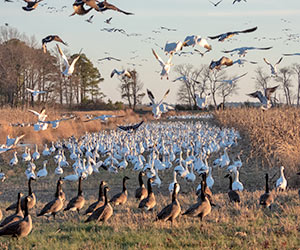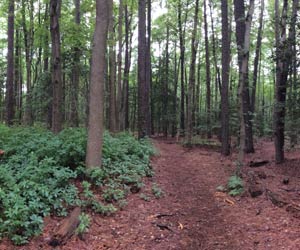Ecosystem at Blackwater National Wildlife Refuge
Blackwater National Wildlife Refuge (NWR) lies on the Eastern Shore of Maryland among the beautiful tidal marshes of Dorchester County. The Refuge is fed by the Blackwater River and the Little Blackwater River, both of which flow through three local swamps: the Gum, the Kentuck, and the Moneystump. Due to its location, Blackwater NWR is an important stop along the Atlantic Flyway (a migratory bird route that stretches from Canada to Florida).
Blackwater NWR is an estuarine marshland ecosystem and is known for its brackish tidal marshes and majestic loblolly pine trees (the loblolly is a southern pine that is accustomed to coastal conditions and reaches its northern limit just north of Blackwater). The drier marsh meadows at Blackwater are dominated by saltmeadow cordgrass and saltmarsh cordgrass, while the wetter marshes are frequented by Olney three-square. Olney three-square is the most dominant marsh plant at the Refuge and is a favorite of geese and muskrats.
In addition to marshland, Blackwater NWR also holds smaller areas of mixed evergreen and deciduous forests, managed freshwater impoundments, and managed cropland. The freshwater impoundments and cropland are carefully maintained by U.S. Fish and Wildlife Service staff and help increase the diversity of food and wildlife at the Refuge.
Living in the marshlands and forests of Blackwater are many forms of unique and interesting wildlife. In addition to over 250 species of birds, Blackwater NWR also boasts 35 species of reptiles and amphibians, tens of thousands of geese and ducks during the peak migration periods, and many resident mammals including whitetail deer, sika deer (an Asian elk), foxes, otters, and raccoons. In addition, Blackwater NWR is frequented by three once-endangered species: the Delmarva fox squirrel, the peregrine falcon, and the American bald eagle. The bald eagle population is a source of great pride at Blackwater NWR and is one of the largest populations on the Atlantic coast.


